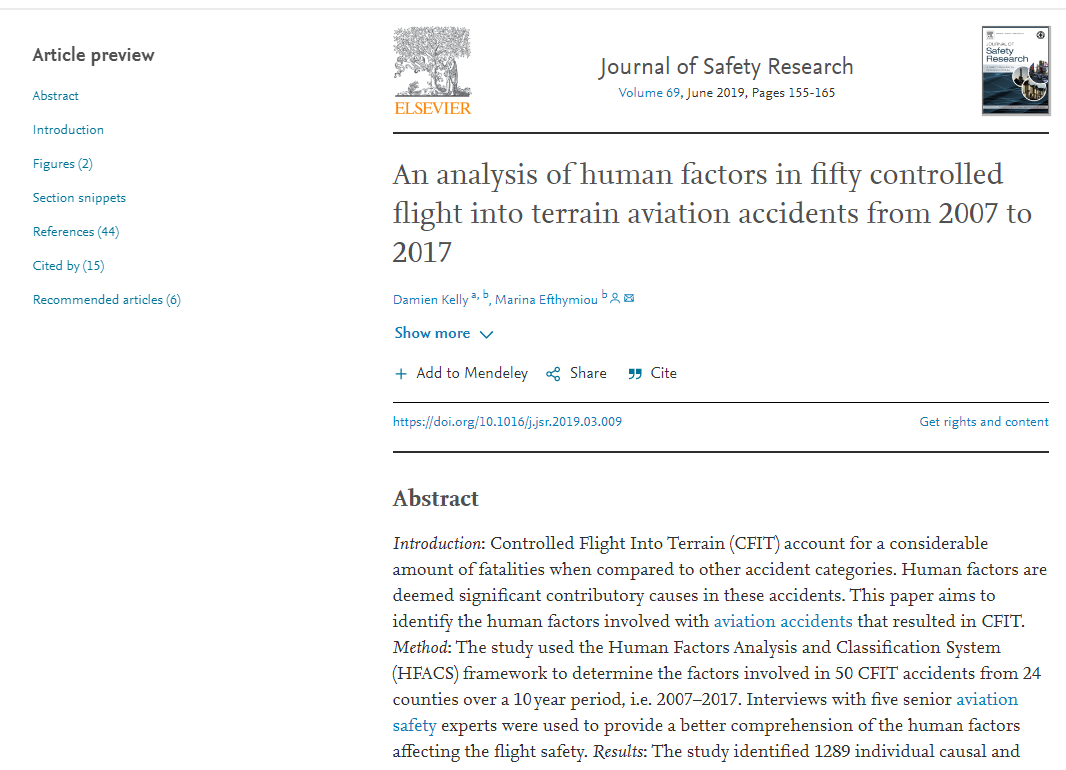【文章推荐】 An analysis of human factors in fifty controlled flight into terrain aviation accidents from 2007 to 2017
题目:An analysis of human factors in fifty controlled flight into terrain aviation accidents from 2007 to 2017
作者:Damien Kelly,Marina Efthymiou
摘要:Abstract
Introduction: Controlled Flight Into Terrain (CFIT) account for a considerable amount of fatalities when compared to other accident categories. Human factors are deemed significant contributory causes in these accidents. This paper aims to identify the human factors involved with aviation accidents that resulted in CFIT. Method: The study used the Human Factors Analysis and Classification System (HFACS) framework to determine the factors involved in 50 CFIT accidents from 24 counties over a 10 year period, i.e. 2007–2017. Interviews with five senior aviation safety experts were used to provide a better comprehension of the human factors affecting the flight safety. Results: The study identified 1289 individual causal and contributory human factors with unsafe actions and preconditions for unsafe actions being the main subcategories of the accidents. The study found that CFIT occur across a range of pilot experience and 44% of accidents occurred in cruise flight. Distraction, complacency and fatigue are all elements that flight crews may experience as contributors to CFIT during cruising. Conclusions: Human factors represent a major component of CFIT accidents. The analysis revealed a similar pattern of contributory and causal human factors across the various flight categories, with some noteworthy isolated variations. The prevalent factors were decision and skill-based errors along with communication, coordination and planning issues. Practical applications: Provision of specific CFIT awareness, pilot training focusing on improved decision-making and revision of basic flight skills, development of specific Global Positioning System routes for transiting high terrain areas are necessary to prevent CFIT accidents. Installation of Terrain Avoidance and Warning System and Ground Proximity Warning System and appropriate equipment training, specific CFIT Crew Resource Management training and improvement of organizational knowledge on the elements involved in CFIT are also recommended.

